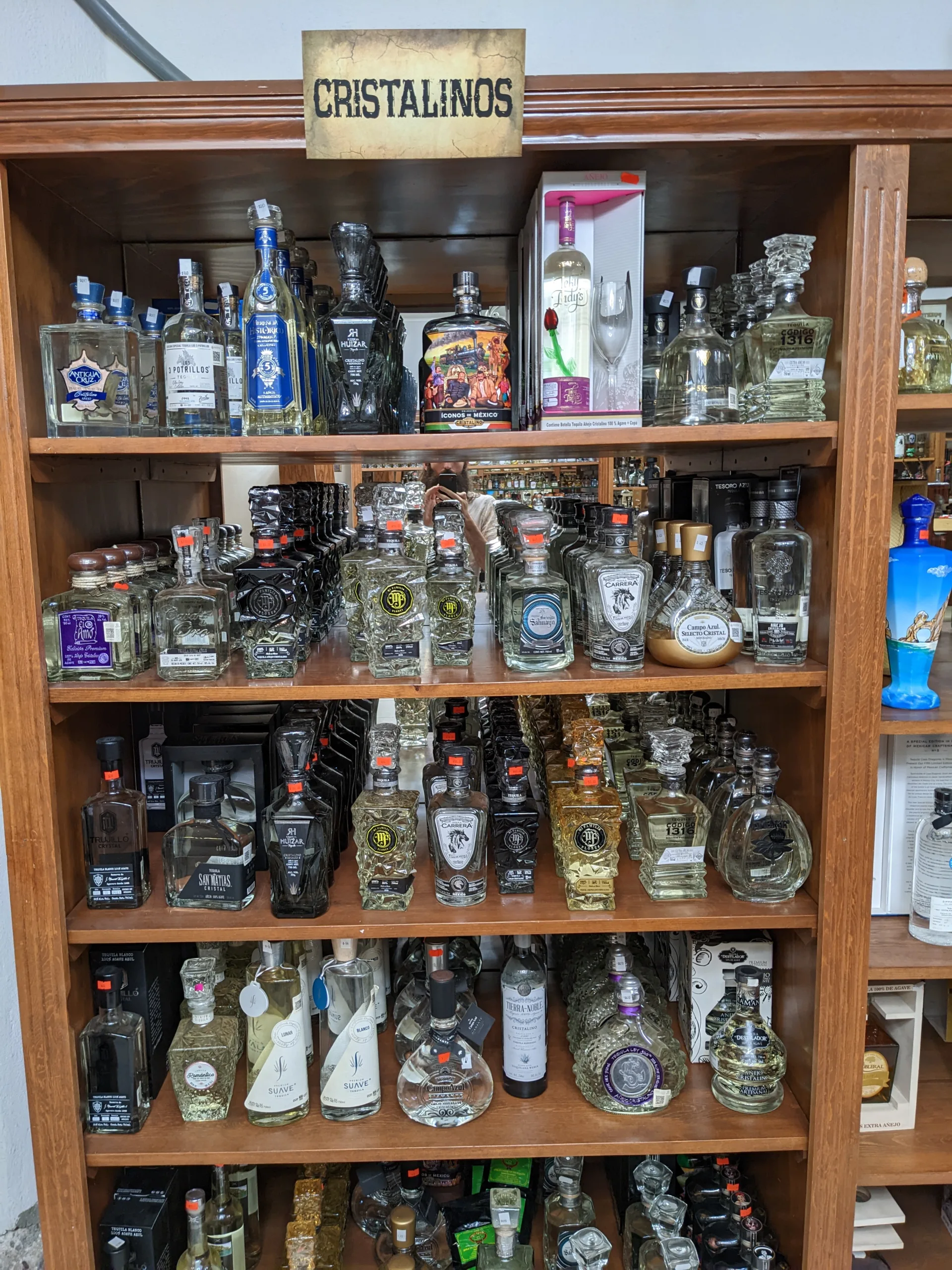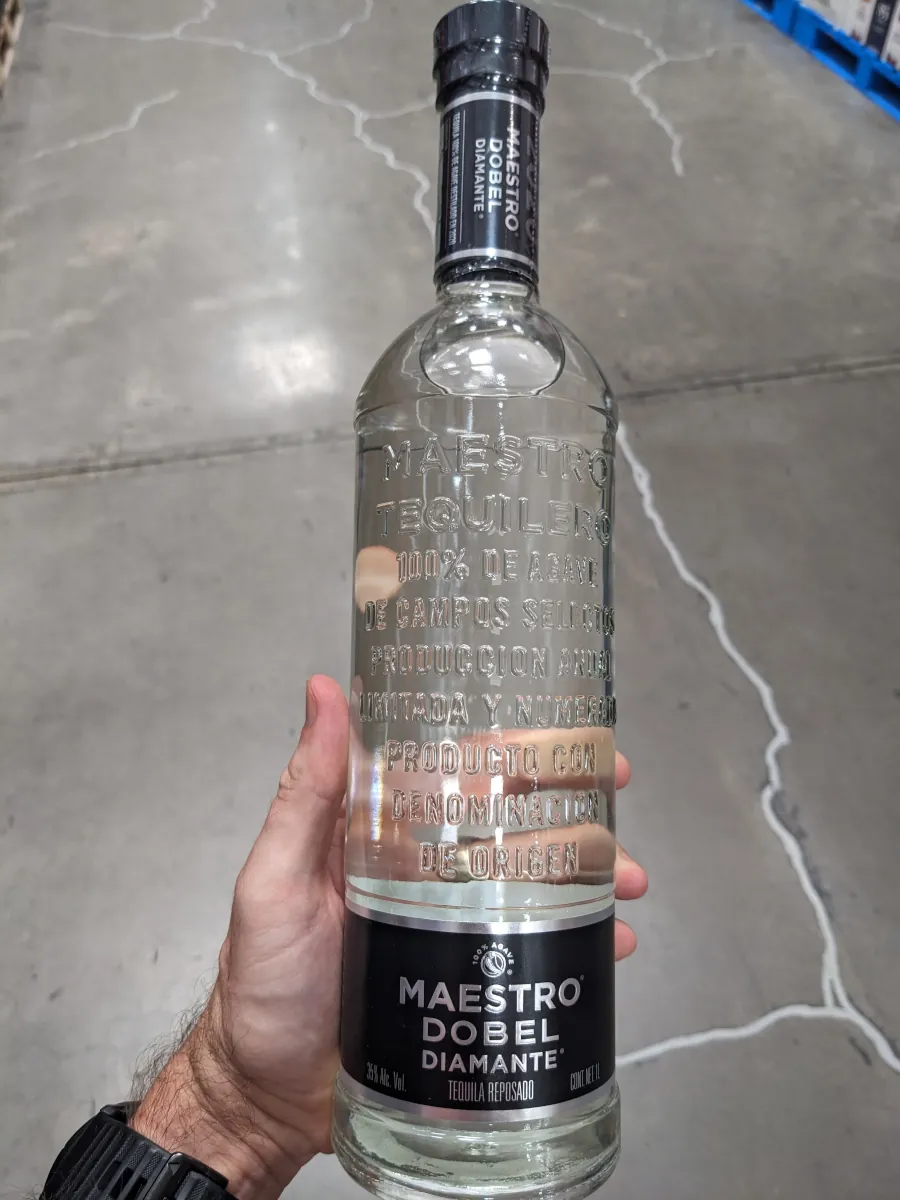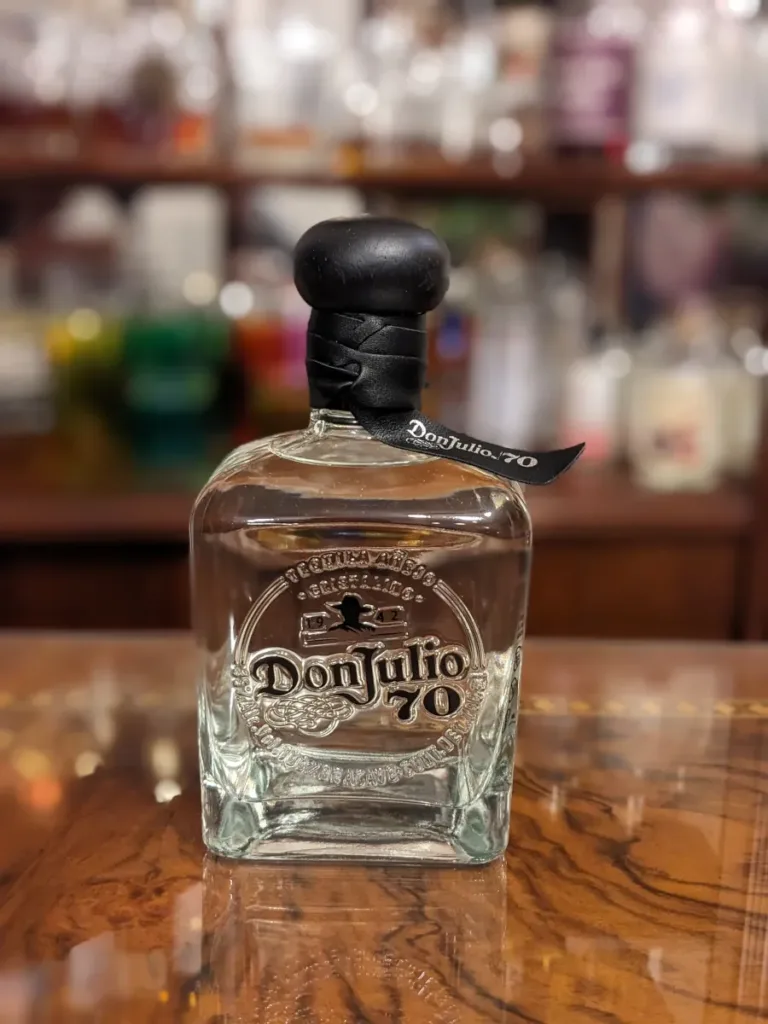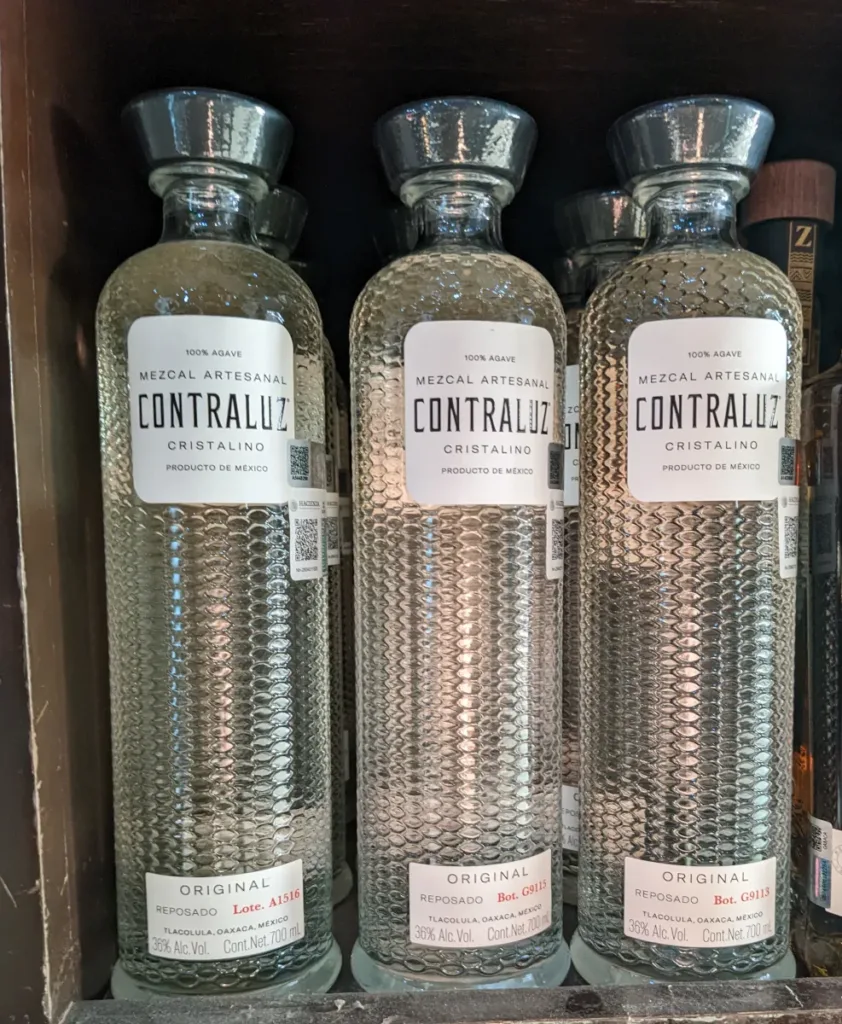Cristalino tequila is aged tequila that has been charcoal filtered to remove all or most of the color and some of the flavor from the aging process. It’s a relatively new method in the world of tequila but has been used for Cuban rum since the late 1800s. In fact, Bacardi Superior, the popular, low cost white rum, is essentially a cristalino rum.
Cristalino tequilas are the fastest growing category of one of the fastest growing spirits categories. That’s fast. Already more popular in Mexico than standard reposados, cristalinos are coming for the US.
Here we tell you how it’s made, what it tastes like and how it compares to other types of tequila. We also cover what tequila snobs think and what celebrities have been first to pounce on the trend.
Table of Contents
Official Tequila Classifications
Tequila production and marketing is regulated, with rules governing what can be called tequila, how it must be produced and how it can be labelled. Tequila can only be made in certain regions in Mexico (mainly the state of Jalisco) and it must be made from at least 51% blue weber agave. Most mid-range or higher tequila is 100% agave. Beyond that there are five classifications based on the ageing of tequila:
- Blanco (AKA “plato” or “silver”)
- Unaged tequila or aged for up to 2 months in oak barrels
- Oro (AKA “gold” or “joven”)
- A blend of blanco and other aged tequila
- Reposado (AKA “aged”)
- Tequila aged between 2-12 months in oak barrels
- Añejo (AKA “extra aged”)
- Tequila aged 1-3 years in oak barrels
- Extra añejo (AKA “ultra aged”)
- Tequila aged more than 3 years in oak barrels
Cristalino tequila involves filtration, using activated charcoal to remove all or most color. Cristalino is not yet an official classification. Each cristalino will be a version of one of the above 5 categories (yes there is even cristalino blanco).

What is Cristalino Tequila?
Cristalino tequila is a style of aged tequila that has been filtered to remove all or most color. It is clear and colorless so it looks just like blanco tequila. In claimed purpose is to produce a smoother, lighter drink while still retaining the flavors from aging. Cristalinos are often marketed at flexible tequilas, great for sipping strait and in cocktails.
Activated charcoal is usually used to remove the color in a process similar to Cuban style white rums like Bacardi. Cristalino is not yet an official class of tequila, but it is recognised by the tequila regulators in Mexico, the CRT.
How is it Made?
To make a cristalino, tequila that has been aged in oak casks is filtered with activated carbon or charcoal. This can either be through adding carbon powder to the tequila then filtering out the carbon, or by passing the tequila through a stack of carbon filter sheets (kind of like a French press for coffee).
Parts of the liquid that contain the color adhere to the surface of the charcoal. Other particles that impact flavor and texture also adhere to the charcoal, changing the taste, as well as the look. Typical parts that are removed during filtration include aldehydes, aminos and fusil oils. Color molecules are larger than a lot of flavor molecules so can be filtered separately.
What Does it Taste Like?
Cristalino looks like a blanco tequila (or vodka or gin for that matter) but tastes more like softer version of an aged tequila like reposado or añejo. Overall, the filtration process tends to remove some of the oaky flavors from aging but leave the sweetness. The taste of cristalino tequilas varies depending on a number of factors such as:
- The quality of the underlying agave (higher quality, more mature agave tastes better than agave harvested too early. Younger agave can be more bitter)
- The underlying process used to make the tequila (roasting, crushing, fermenting, distillation)
- How long it has been aged in barrels (the youngest cristalinos are aged just two months, the oldest for over three years)
- What, if any, additives have been used. Additives are never disclosed but can include oak extract, glycerine (to add texture) and sweetener
What is Activated Carbon?
The activated carbon or charcoal used in filtration can be from a number of sources, such as coal, wood or coconut shells. It is processed by high temperature steam which creates millions of pores of various sizes which increase its surface area. This helps “activate” it to better bind to different particles.
Depending on the size and nature of the pores, the charcoal will attach to different elements from the tequila. It is up to the producers to use the right method and mix of charcoal so that color is removed but the right flavors remain.
History of Cristalino Tequila
The first commercial cristalino was Maestro Dobel Diamond which launched in 2008 and sold for $75 a bottle in the US. Maestro Dobel was and is owned by Becle, the company majority owned by the Beckman family, descendants of Jose Cuervo, the original tequila maker. Dobel is short for “Juan Domingo Beckman Legorreta”, the creator of the brand and an 11th generation tequila producer and owner. The word “cristalino” wasn’t used at this time, the tequila was referred to as “diamond tequila”.
In 2023 the tequila is now called Maestro Dobel Diamante and sells for around $40, but in a much less impressive bottle. It is made by filtering a blend of reposado, añejo and extra añejo tequilas (aged one, two and three years). Under the tequila rules for classification this counts as a reposado, as the classification depends on the youngest aged category.

Around the internet you may see claims that Don Julio 70 was the first cristalino, but this is incorrect. Don Julio 70 was launched in late 2011 as a limited edition, hitting the market in 2012, three to four years after Maestro Dobel Diamond. Don Julio 70 was the first añejo cristalino and was named in honor of the 70th anniversary of tequila making of the founder Don Julio González. Enrique de Colsa was the master distiller behind the creation of the tequila, reportedly taking seven years to perfect the process. At launch Don Julio 70 was referred to as “añejo claro”. Diageo now owns Don Julio but at the time it was also owned by the Beckman family.

Impact of Additives in Cristalino Tequila
Tequila producers often add additives to change the final taste. Under the regulations, up to 1% of additives can be introduced without having to disclose it. Because charcoal filtration tends to remove flavors as well as colors, many producers use additives to balance this out.
The additives allowed are:
- Oak extract (adds a woody flavor)
- Glycerine (makes a thicker, richer texture)
- Sweetener (does what it says, and in particular, covers bitterness from low quality agave)
- Caramel color (not used in cristalinos for obvious reasons)
For producers wanting to jump on the cristalino bandwagon, additives can be used to cover up a crude filtration process – remove most of the flavor from aging, then just add it back with additives.
What do Tequila Purists Think?
Many question the motivation behind making cristalinos – why spend all that time aging, just to go and remove the the same qualities that you get from aging? It’s a fair point. Marketing and “innovation” is definitely what is driving the push to release more cristalinos.
However, in a massively growing category like tequila you are marketing to new consumers all the time who may have bad memories of cheap nasty tequilas and may be put off by fuller flavored or more nuanced expressions. A clear tequila can look more approachable and “pure”.
For more experienced tequila drinkers it’s a bit of a novelty to be tasting an aged tequila but in a colorless format. I can also see the benefit for cocktail making, where using a white spirit works better with the drink presentation.
Personally speaking I’m not a fan of cristalinos generally but some are not bad. The problem for me is, for the price of any cristalino I’m almost always likely to find a better tasting unfiltered tequila. If I feel like a brighter more agave based tequila I’m going to pick a blanco. If I feel like something richer I’m going to pick an añejo and if I feel like something in between I’m going for a reposado.
What Cristalinos Might a Purist Like?
There are a few brands putting out additive-free cristalinos that tend to get pretty good reviews from the afficionados.
- Volcan de Mi Tierra Cristalino (in both añejo $70-$80 and an X.A edition which, while technically a reposado is a blend of reposado, añejo and extra añejo for about $180)
- El Tequileño Cristalino Reposado (about $60)
Additive-free tequila tends to taste more like agave with more sublte notes. To some this may come off as less “smooth” but that doesn’t mean it will burn or taste harsh.
Cristalino vs Blanco
Blanco and cristalino tequila can look the same (clear and colorless) but cristalino tequilas have more flavors resulting from the aging process or additives while blancos tend to be brighter and citric or peppery. By regulation, blanco tequilas should not have additives but aged tequilas (which cristalinos are) can have additives. Cristalinos are “smoother” than blancos due to both the filtration process and the typical inclusion of additives.
Almost all cristalinos are made from reposado or añejo tequila (i.e., tequila that has been aged for at least two months in oak). The aging process tends to add flavors like vanilla, oak, spice, butter and toffee. The charcoal filtration process removes some but not all of these flavors.
There’s at least one cristalino blanco available from Tuyo Tequila which has been aged for one month in oak before being filtered.
Cristalino vs Reposado and Añejo
Compared to tequila with the same age cristalino tequilas should have more subtle aging notes (i.e. vanilla, caramel, oak, toffee). In practice, producers are even more likely to use additives with cristalinos to add back flavors lost from the filtration. In some cases they get carried away and the cristalino tequilas end up very sweet with lots of vanilla. For example, 1800 Cristalino and Don Julio 70 taste extremely sweet.
Celebrity Cristalino Tequilas
Of course celebrities have gotten on board the cristalino band wagon. While there are almost 50 celebrity tequilas, so far just a handful are producing cristalinos. Here are a few celebrity-backed cristalino tequilas that are available:
- Gran Coramino Reposado Cristalino, founded by Kevin Hart
- About $65
- Flecha Azul Cristalino Añejo by Mark Wahlberg and Abraham Ancer
- About $110
- Casamigos Cristalino Reposado, founded by George Clooney.
- About $55-$65
- Launched in June 2023
Cristalino Mezcal?
You bet. Contraluz was the first cristalino mezcal released by Casa Lumbre and Colombian musician Maluma, launching in the US in 2022. If the tequila purists are rolling their eyes at cristalino, you better believe the mezcal snobs are not a fan of this one. In this crowd even aged mezcals are barely tolerated. A non-Mexican celebrity promoting a cristalino mezcal doesn’t do much for the die-hard fans but that’s not who it’s marketed to.
Mezcal brand Creyente also produces a cristalino reposado. Creyente is owned by Becle Group.

Charcoal Filtration with Other Spirits (Vodka, Tennessee Whiskey, Rum)
Charcoal filtration is thought to have been first used in vodka production in 1780. The creation of the process is often attributed to Theodore Lowitz. The filtration, along with the high number of distillations contributes to vodka’s neutral taste.
Tennessee whiskey like Jack Daniels and George Dickel uses charcoal filtration after distillation but before aging. The procedure used is known as the Lincoln County Process after the location of an early Jack Daniel’s distillery. The process is thought to be first used by Alfred Eaton in the 1820s. The charcoal used comes from sugar maple trees. Gentleman Jack is charcoal filtered after aging, but this is not common, and in this case does not remove the color.
Bacardi’s standard white rum is clear and colorless and has been aged in oak for 12-24 months. This would make it an añejo in tequila terms. Straight from the barrel, Bacardi’s rum is brown like any other aged spirit. It is charcoal filtered to remove the color and even out the taste. Facundo Bacardí was the first to use activated carbon from coconut shells to filter spirits in the late 19th century.
